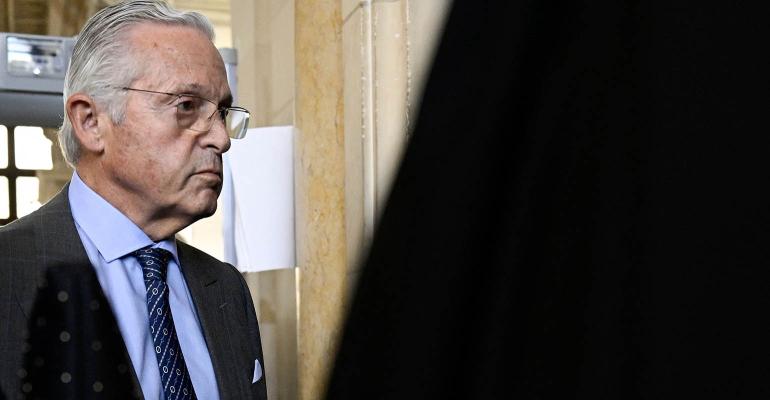On the heels of a scathing expose by the New York Times last month, the Wildenstein family is once again making headlines as they return to French court to battle charges of tax fraud and money laundering. This is the third time prosecutors have opened a case against the family, this time against art dealer and collector Guy Wildenstein.
The Wildenstein family art dynasty dates back to the 1870s, and the family is believed to have “one of the world’s most expansive art collections,” per ARTnews. How they amassed this collection (and what art is part of the collection) and family fortune appears to be shrouded in secrecy, served with a side of accusations of money laundering and what French prosecutors are calling “the longest and the most sophisticated tax fraud” in modern French history.
The Beginning of the End
The case against Guy stems from over two decades ago, following the 2001 death of Guy’s father, Daniel Wildenstein. As the New York Times story details, the alleged financial wrongdoings first came to light when Daniel’s widow Sylvia Wildenstein accused Guy and his brother Alec of tricking her out of her inheritance by claiming that their father died in financial ruin and that they were trying to protect her. Guy allegedly also underreported assets after his brother Alec’s death in 2008. Sylvia and her lawyer Claude Dumont Beghi went on to expose the truth about the family, including their vast web of offshore trusts, bank accounts and shell corporations, as well as art stored in various free ports (free ports allow traders to ship and store property without paying taxes or customs duties). Even worse, the investigation into the Wildenstein vaults has turned up artworks long reported as missing, leading to speculation that the family might have owned Nazi-looted or stolen art.
Additional allegations against the unscrupulous family have been brought up over the years, as evidence paints a pattern of Wildenstein men cutting off women in the family from its vast fortune during messy divorces and inheritance squabbles.
Despite not being able to get Sylvia her desired settlement while she was alive, the evidence unearthed by Sylvia and her lawyer has been enough to persuade French prosecutors to bring forth the case, shining a light on how the ultra-rich are able to use the art market to evade taxes.
Guy was previously acquitted twice on the charges, once in 2017 and in 2018, but in a surprising twist, France’s highest court cancelled the acquittal two years ago.
What’s At Stake?
According to artnet, the current trial, set to run from Sept. 18 to Oct. 4, will determine if Guy and any of his co-defendants (including financial advisors, lawyers, a nephew and a sister-in-law) are guilty of money laundering and tax evasion and whether they’re liable for nearly $1 billion in back taxes and fines. As reported, specifically at issue now is “whether the family’s trusts should have been reported after all, and whether or not they were truly independently managed…Guy is accused of having personally directed trustees to carry out his will, in violation of the trust’s tax privileges.”
Previously, according to the New York Times, “judges had ruled that although the family had demonstrated a ‘clear intention’ to conceal its wealth, its actions were either past the statute of limitations or fell into a legal gray area, before France enacted legislation in 2011 that requires foreign trusts to be declared to the authorities.”
Disgraced But Still Influential
Despite the slew of legal trouble embroiling the family over the years, including a settlement with the Internal Revenue Service over a tax bill relating to artworks part of Daniel’s U.S. estate (in addition to art, the family has an expansive real estate portfolio, with Guy recently off-loading a $26.1 million New York City mansion), and a buyer trend towards contemporary art (the Wildenstein’s are largely known for their historic art collection), the family’s influence isn’t expected to fully wane, as they’ve amassed a sea of professional and scholarly authority when it comes to Old Masters and Impressionists.





